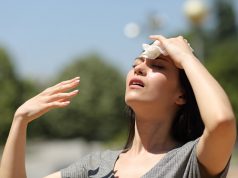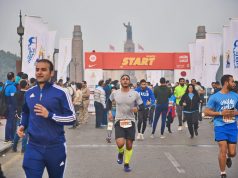 How much do you know about acupuncture? After all, the art of using needles and pressure points to alleviate ailments has been used by cultures across the globe in different forms for centuries. To learn more, we dug a little deeper in our recent chat with Dr. Adel Badr, a surgeon and physician who also holds high accreditation in Traditional Chinese Medicine (TCM), and the practise of acupuncture. Dr. Badr shares with us all we need to know about acupuncture… and more!
How much do you know about acupuncture? After all, the art of using needles and pressure points to alleviate ailments has been used by cultures across the globe in different forms for centuries. To learn more, we dug a little deeper in our recent chat with Dr. Adel Badr, a surgeon and physician who also holds high accreditation in Traditional Chinese Medicine (TCM), and the practise of acupuncture. Dr. Badr shares with us all we need to know about acupuncture… and more!
The history of acupuncture
Acupuncture actually dates back several thousand years, and is mainly associated with the Chinese of course, as the culture that first developed, recorded and used it. The first major textbook named Huangdi Neijing or The Yellow Emperor’s Classic of Internal Medicine was created around 100 BC, and it has evolved from there. Similar principles were also used by other cultures, including the Egyptians. The practise even appears to have been recognized as far as Europe, with Ötzi, a frozen mummy dating back around 5,000 years, discovered bearing tattooed markings identifiable as acupuncture points. From that point on the practise was developed and refined, becoming established in Europe through traders like the Dutch and Portuguese from the late 1500’s. Franciscan monks also played a role in this. Acupuncture has a rich history, well worth delving into.
The principles behind acupuncture
The concept and principles that rule acupuncture are aligned with the principles that govern the Eastern mentality as a whole. These same principles can be seen in many aspects of the lifestyle and culture, in farming, nutrition, nature, and the cycle of the seasons. The five elements of Earth, Metal, Water, Wood and Fire play a role, as do the theories of Chi and Yin and Yang. Acupuncture is just one branch of TCM, it uses particular points on the body through which energy can be channelled. The practitioner will have already conducted an analysis to see which organs or conditions need to be addressed.
Conditions treated with acupuncture
- Acute bronchitis
- Acute and chronic gastritis
- Adverse reactions to radiotherapy and chemotherapy
- Allergies
- Anxiety
- Blood pressure problems
- Constipation
- Depression
- Dysmenorrhea
- Infertility
- Insomnia
- Lower-back pain
- Migraine
- Obesity
- Pain relief
- Rheumatoid arthritis
- Sexual dysfunction (low libido, erectile dysfunction)
- Stress
From the physician to the acupuncturist
The physician will conduct a thorough study of the patient, covering all aspects of the person’s physical and emotional condition. Even if the patient complains about a particular ailment, it may be generated by another part of the body; so all points should be covered before reaching a diagnosis. The practitioner may ask for certain tests, such as MRIs, blood pictures or X-rays, and will then identify the organs creating the imbalance or problem; the approach to diagnosis differs in TCM from Western methods. The practitioner should be able to read and understand the test results, as well as understanding the indications, dosages and interaction between medications being used, whether through a prescription or natural remedies.
I personally carry out a Western consultation and diagnosis in addition to one using Eastern techniques to get a clear picture of what is going on with the entire system. Body demeanour, skin color and condition, the condition of pulse, and especially the condition of the tongue are all important diagnostic tools. The tongue can indicate a lot about the state of the internal organs. The pulse is taken in six positions, each relating to the six Yin and six Yang organs in the body.
Consult a general practitioner first!
I believe it is important for anyone considering acupuncture as a therapy to consult a general practitioner as well to avoid missing anything that might be urgent or life-threatening and non-responsive to acupuncture. This would include cases needing surgery or antibiotics where there is a severe, aggressive infection or disease. In many of these cases acupuncture can still be useful as a complementary therapy when carried out in conjunction with Western therapy.
Duration depends on the diagnosis
The practitioner will lay out a program of sessions after making the diagnosis. The frequency of treatments varies according to the ailment or condition. Treatments might be daily, or twice a week, depending on the severity of the condition. Some conditions can even be treated in one or two sessions, a frozen shoulder for example. Usually if a condition is chronic we expect the treatment period to be more extended. Each session could take between 30 minutes up to an hour. The process itself is not painful; the needles are very thin and inserted lightly. We look for a chi sensation, a numbness or response in a location away from the needle itself.
Dr. Adel Badr’s Advice
Definitely acupuncture itself is part of a change in lifestyle. It is all about balance, in diet and exercise as well. Lifestyle changes are generally needed depending on the condition, as in weight loss, for example. Excesses in general should be avoided, and as with the taking of medications, there are certain rules that should be followed.
Contact info:
Clinic: No. 4 Road 151
3rd Floor
Maadi
Tel: 0100 111 8082 / 0122 331 8536
Nūn Center
4 Shafik Mansour St.
Zamalek
Tel: 0122 398 0898
Osana Family Wellness
4 El-Nady St.
Maadi
Tel: 0101 773 3770





